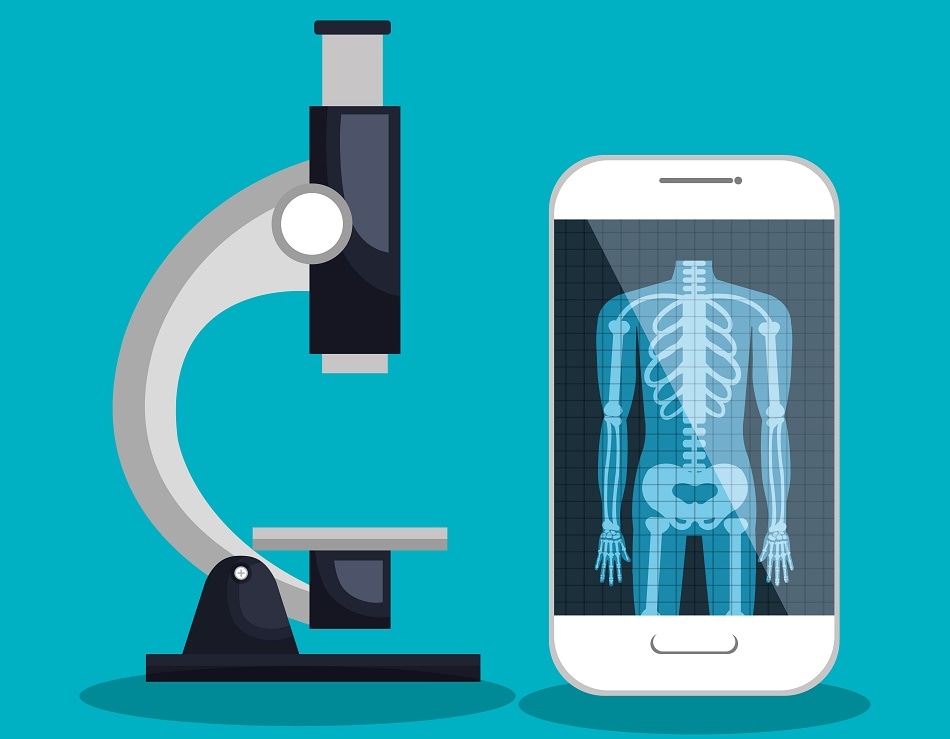Oct 6 2016
 Studio_G/Shutterstock.com
Studio_G/Shutterstock.com
A smartphone microscope that can be easily assembled, offers new techniques to interact with and also to learn about common microbes.
This open-source device can be used by teachers or for other educational requirements.
This new 3D printed smartphone microscope was developed at Stanford University and converts microbiology into game time. Kids can make serious observations with miniature light-seeking microbes known as Euglena or can even play games using this device.
Many subject areas like engineering or programming have neat toys that get kids into it, but microbiology does not have that to the same degree. The initial idea for this project was to play games with living cells on your phone. And then it developed much beyond that to enable self-driven inquiry, measurement and building your own instrument.
Ingmar Riedel-Kruse, Assistant professor of Bioengineering, Stanford University
This device was named as the LudusScope by Riedel-Kruse, in which “Ludus” means "game" "play," or "elementary school" in Latin. PLOS ONE features details of the LudusScope presented by Riedel-Kruse along with first author Honesty Kim, a graduate student in Riedel-Kruse's laboratory
Playing with Cells
The LudusScope has a platform for the microscope slide in which Euglena can swim freely while being surrounded by four LEDs. With the help of a joystick that has the potential to activate the LEDs, kids will be able to control the swimming directions of the light-responsive microbes.
On top of the platform, a smartphone holder adjusts the position of the phone's camera over a microscope eyepiece and enables observation of the cells below.
Children can run various software that overlay above the image of the cells on the phone. One of them appears similar to the 1980s video game Pac-Man with a maze consisting of small white dots. Kids will be able to select one cell to track, and then use the LED lights to control the directional movement of cell so that it can move around the maze and collect the dots. The other game looks like a soccer stadium in which kids can earn points by directing the Euglena through the goal posts.
Other non-game applications offer real-time displays of swimming speed, microscope scale-bars or zoomed-in views of individual cells. This allows kids to collect data about Euglena’s swimming speed, behavior and natural biological variability. Riedel-Kruse wants students to model the behaviors they observe using a simple programming application known as Scratch, which is taught to many kids in schools. He motivates teachers also to do the same.
All the elements, including the plastic microscope and the chamber that holds the Euglena, can be easily built by youngsters using simple and easily available parts.
Complex Beginnings
The idea of this project began from a Stanford bioengineering class that Riedel-Kruse taught. Since the class dealt with very complex parts, he wondered if these elements can be simplified for younger learners.
We wondered if we could make it so easy to replicate that even middle-schoolers could build it.
Ingmar Riedel-Kruse, Assistant professor of Bioengineering, Stanford University
In the present iteration, if a teacher wants to use the device in class, they can start with the open-source 3D printing patterns and software that are added as part of the paper. The number schools possessing 3D printers are increasing, while schools that do not have 3D printers can put forward their plans to a professional printer who will be able to build a holder for the smartphone and microscope eyepiece, and also build the stage that holds a microscopic slide.
To receive signals from the joystick and then to transfer them to the LEDs, students will have to wire a small circuit out of common electronics parts for the joystick controller.
Euglena is already being commonly used in classrooms and can be easily procured from companies that supply biological goods. In the game, Euglena swims within a chamber that is constructed by attaching strips of double-sided tape to the cover slip and the slide.
Riedel-Kruse stated that the acts of building, observing, interacting and modeling the cells is compatible with new science learning guidelines that are mentioned in the Next Generation Science Standards that are followed by many schools.
Expert Opinion
Riedel-Kruse hopes that some day kids will use the LudusScope to play fun games. To experiment this, the research team took the LudusScope to a walk-by science event and invited teachers and students to the laboratory.
Riedel-Kruse felt that teachers and high-school students valued the gaming concept less than the other properties of the LudusScope, while they found it to be of great use in the field of education.
I thought the interactive cell stimulation and the resulting games was the coolest thing but the teachers and students didn't necessarily agree. What they were more excited about is the more basic things like the ability to build your own instrument, that multiple people can see the screen at the same time and that you can select and track individual cells.
Ingmar Riedel-Kruse, Assistant professor of Bioengineering, Stanford University
Riedel-Kruse is still updating the features of the LudusScope based on feedback from students and teachers. A seed grant has been awarded to him in order to develop a science kit and work together with an educational game company to carry out more user studies. He expects the kit to be available in the market in over a year.
Additional authors of the paper are Lukas C. Gerber, Daniel Chiu, Seung Ah Lee, Nate Cira and Sherwin Yuyang Xia. Riedel-Kruse also holds membership in the Stanford Bio-X.
The National Science Foundation and a Stanford Graduate Fellowship supported this research project.